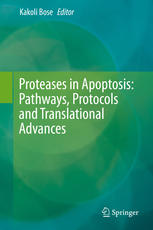

Most ebook files are in PDF format, so you can easily read them using various software such as Foxit Reader or directly on the Google Chrome browser.
Some ebook files are released by publishers in other formats such as .awz, .mobi, .epub, .fb2, etc. You may need to install specific software to read these formats on mobile/PC, such as Calibre.
Please read the tutorial at this link: https://ebookbell.com/faq
We offer FREE conversion to the popular formats you request; however, this may take some time. Therefore, right after payment, please email us, and we will try to provide the service as quickly as possible.
For some exceptional file formats or broken links (if any), please refrain from opening any disputes. Instead, email us first, and we will try to assist within a maximum of 6 hours.
EbookBell Team

4.3
68 reviewsThis book provides a comprehensive overview of the proteases involved in programmed cell death. It presents a focused yet extensive discussion on proteolytic enzymes such as caspases, HtrAs, granzymes, calpains and cathepsins as well as laboratory protocols related to enzymology and apoptosis. Mouse model systems and non-invasive imaging techniques in apoptosis-related diseases such as cancer and neurodegeneration are also covered in this book.
While slowly unravelling the complexities of apoptosis in chapter one,the next three chapters individually elaborate on different classes of proteases that play key roles in the initiation, progression and execution of programmed cell death. The last two chapters complete this discussion by describing different laboratory methodologies and therapeutic advances involving apoptotic proteases. Protocols portraying in vitro and ex vivo colorimetric and fluorescence-based enzyme kinetic studies as well as cell death assays are explained in the fifth chapter. Preclinical in vivo models and non-invasive imaging in apoptosis to understand the complexities of disease progression and their contribution toward therapeutics is recounted in the last chapter.
The book spans topics related to both fundamental and applied biology. It would therefore be equally appealing and informative to scientists working in the field of apoptosis and those who are investigating mechanisms of proteases and enzymes in general. The protocols would certainly benefit both graduate and undergraduate students working in the related fields and provide useful leads for drug design to translational biologists involved in neurodegeneration and cancer research.